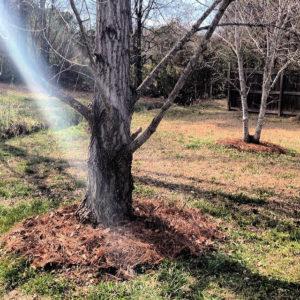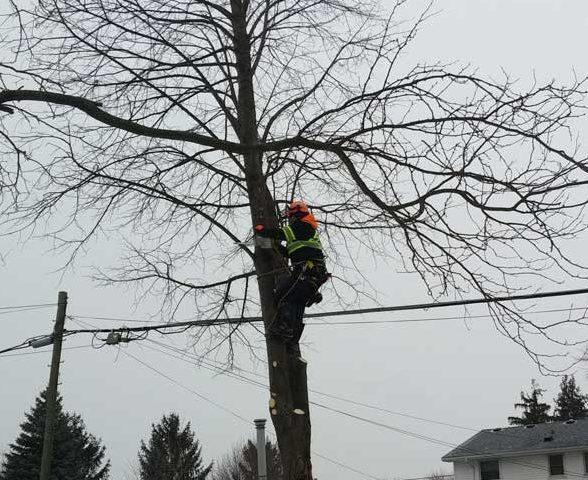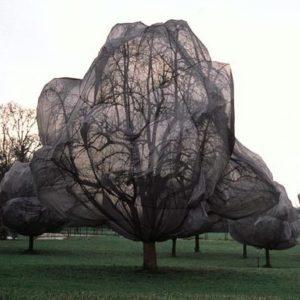Winter can do a lot of damage to a tree. It’s a part of nature, really, and trees are built to resist much of what the cold, harsh weather will throw at them. Their whole system works to prevent the water inside from freezing and expanding, and their ability to go dormant in the winter helps them survive through a minus 30-degree day during the dead of a Canadian winter.
Sometimes the weather wins. While that’s all well and good in a forest, you probably want to preserve the trees you have in your backyard. Winter damage can weaken the tree, make it aesthetically unpleasing, and even cause damage to your home or vehicles. Here’s what you can do to help to your trees survive the winter intact!
Preserving Your Dormant Trees

Did you know plants have a biological clock? It’s how they know to shut down the growth processes when the seasons begin to change. This shutdown is called “dormancy”, and it’s a survival strategy for plants when they can’t enough of what they need to grow, i.e. water in periods of drought or sunlight during winter. While this strategy helps them survive, it doesn’t mean they won’t need your help to thrive come spring.
Start by giving your trees a strong foundation and protect their roots. Roots don’t become dormant as quickly as the branches and twigs, and are more sensitive. Spread mulch around the tree, a thin layer spread out as the width of the branches. Ironically, moist soil can prevent deeper frost penetration as it is able to hold more heat than dry, sandy soil. So, consider watering before the ground freezes, especially if the fall season hasn’t been too rainy.
 Next up, give your tree a prune. Proper pruning can eliminate weak branches, prevent damage during high winds and ice storms, and encourages good, strong growth when the weather warms up. If you have a new tree, pruning can also let you influence how the tree will grow and prevent structurally-compromising offshoots. Pruning can be easy, and it’s even easier during dormancy, but a professional can spot weak growth better than the average homeowner.
Next up, give your tree a prune. Proper pruning can eliminate weak branches, prevent damage during high winds and ice storms, and encourages good, strong growth when the weather warms up. If you have a new tree, pruning can also let you influence how the tree will grow and prevent structurally-compromising offshoots. Pruning can be easy, and it’s even easier during dormancy, but a professional can spot weak growth better than the average homeowner.
If your trees are near high traffic areas or in the path of runoff, they could be affected by road salt. It’s best to avoid planting in these areas, but if you don’t have any choice, think about setting up a barrier made of burlap material. These barriers can also act as shields from the sun, which brings up another major issue for trees in winter!
Protecting from Sunscald
“Sunscald” occurs when the strong winter sun thaws out the bark and the trees can be “tricked” into waking up; this active tissue will die when the temperature inevitably falls again. This can happen as quickly as nightfall or when the sun gets blocked by a cloud or other obstruction. This can cause visible damage, and the cracks, decaying bark, and peeling can make it susceptible to diseases and insects. New plants are especially prone to sunscald.
The solution is rather simple: wrap the tree! Using a special white or light-coloured paper can reflect the heat off the tree. This will prevent the tissue from activating once dormant. Apply the paper when the tree has become dormant and remove before it reactivates. Covering your tree outside of these times it can harm the tree’s growth. New trees of all species should be wrapped for at least their first two winters, and trees with thin bark (ash, maple, crabapple, and fruit trees like cherry or plum) should be wrapped every winter.
It’s important to look at your trees now, while the weather is chilly but before the winds and precipitation prohibit you or a professional from taking action. If you need a hand and a professional eye, let one of our arborists do an examination for you. We can check the health of the tree, and see if anything needs to go before winter hits. Call us today!


